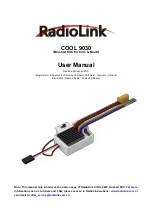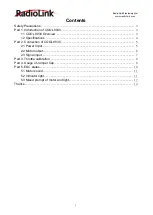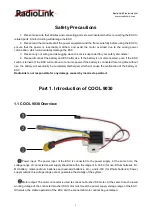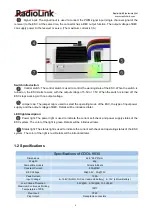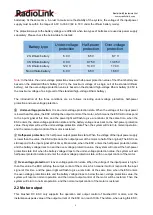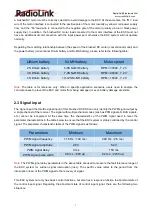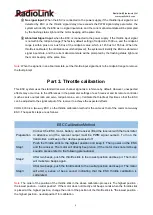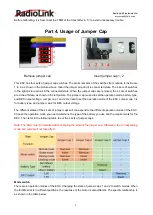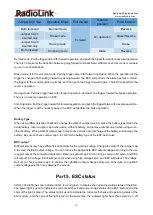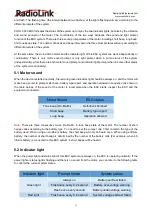
8
RadioLink Electronic Ltd
①
No signal input
: When the ESC is connected to the power supply, if the throttle input signal is not
detected by ESC or the throttle signal delay time exceeds the PWM signal delay parameter, the
system will identify the ESC as no signal input state, and the current abnormal state will be prompted
by the flashing status light and the motor beeping at the same time.
②
Abnormal Signal input
: when the ESC is connected to the power supply, if the throttle input signal
is not within the midpoint range (The factory default setting of midpoint is 1500 us, and the midpoint
range is within plus or minus 50 us of the midpoint value, which is 1450 us to 1550 us. When the
throttle is calibrated, the calibration result shall prevail), the system will identify the ESC as abnormal
signal input state, and the current abnormal state will be prompted by the flashing status light and
the motor beeping at the same time.
Note
: When the signal is in an abnormal state, set the throttle input signal back to the midpoint range to remove
the fault prompt.
Part 3. Throttle calibration
This ESC system uses the standard receiver channel signal as a reference by default. However, unexpected
effects may occur due to the differences in the parameter settings of each receiver and its remote controller
(such as servo output ratio and servo midpoint value, etc.). Calibrate the throttle at this time so that the ESC
can be adjusted to the signal output of the receiver to achieve the expected effects.
COOL 9030 is a two-way ESC, so the throttle calibration method is the same as that of the common two-way
ESC. The specific steps are as follows
ESC Calibration Method
Preparation
Connect the ESC, motor, battery, and receiver (Bind the receiver with the transmitter
in advance, and the receiver output must be PWM signal output.). Turn on the
transmitter, and keep other devices powered off.
Step 1
Push the throttle stick to the highest position and keep it. Then power on the ESC
and the receiver. The motor will directly beep twice. (If the motor does not emit beep
sounds, please refer to the following precautions)
Step 2
After two beeps, push the throttle stick to the lowest position and keep it. The motor
will make two beeps again.
Step 3
After two beeps, push the throttle stick to the neutral position and keep it. The motor
will emit a series of beep sound, indicating that the ESC throttle calibration is
completed.
Note
: The order of the position of the throttle stick in the above calibration process is "the highest position -
the lowest position - neutral position". If the motor does not directly emit beep sounds when the throttle stick
is placed at the highest position, change the order of the position of the throttle stick to "the lowest position -
the highest position - neutral position" for calibration.

